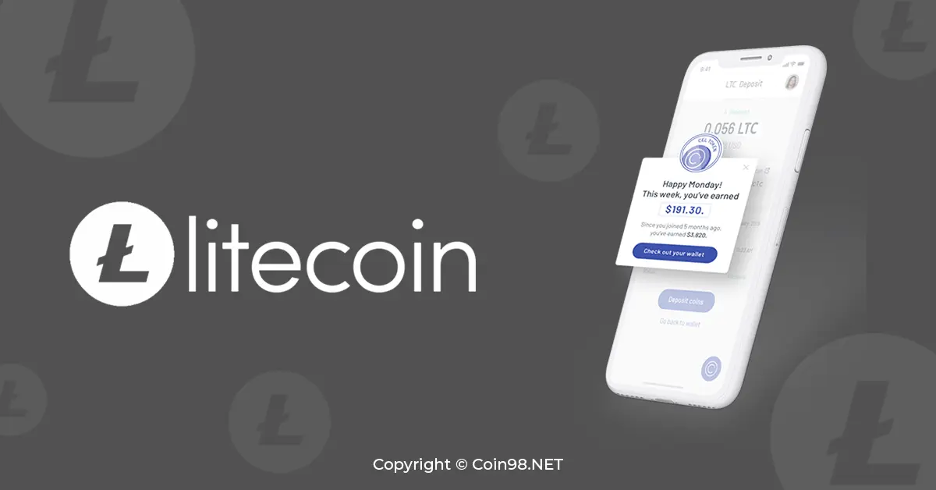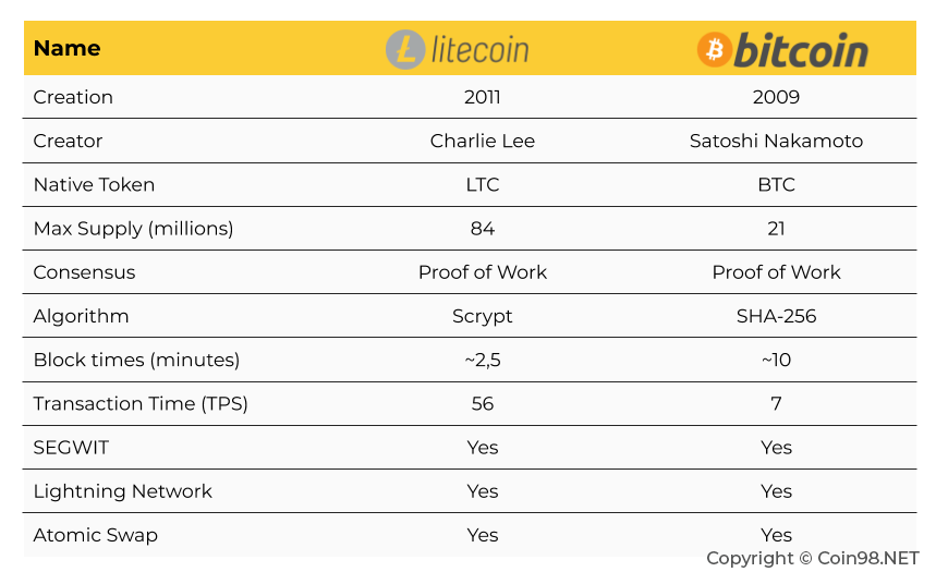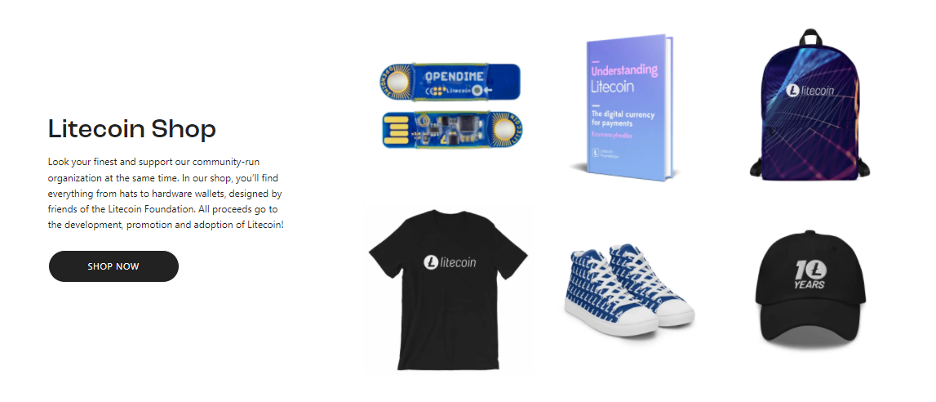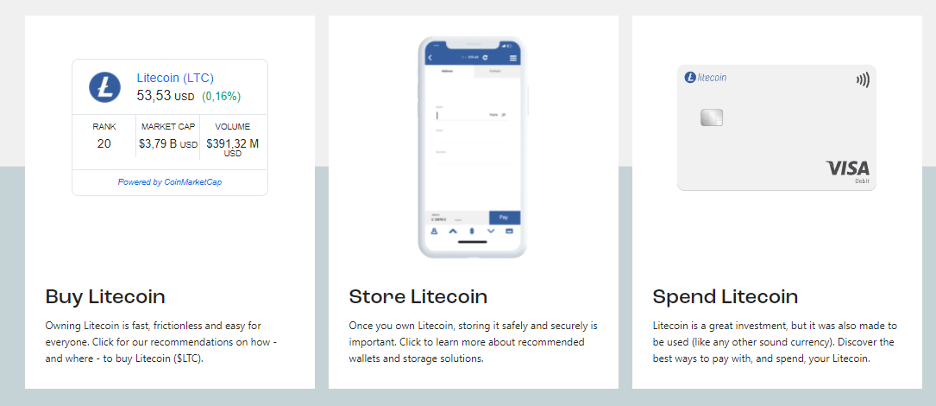What is Litecoin? All you need to know about LTC Token

What is Litecoin?
Litecoin is a peer-to-peer decentralized digital currency (cryptocurrency) which can be used to make quick transactions worldwide, with almost no fees. Litecoin is one of the most established and stable cryptocurrencies in terms of transaction volume and liquidity, and is commonly used as a means of exchange.
After learning about Bitcoin in April 2011 through an article on the Silk Road website, Charlie Lee - a Google employee at that time began to rekindle the idea of creating his own cryptocurrency. In September 2011, Charlie Lee supported the release of the Fairbix project, a cryptocurrency that copied the source code of Tenebrix.
During the release process, Fairbix encountered many errors and the cause was determined to be due to a problem with the source code copied from Tenebrix. Besides, the Fairbix coin was mined too much at one block which made Charlie sure that Fairbix was 51% attacked and decided to leave this project.
After learning from the failure of Fairbix, Charlie decided to launch Litecoin in October 2011. But this time, Charlie decided to fork the code from Bitcoin's blockchain and tweak some parameters like block time, total supply, algorithm... In order to create a faster version of Bitcoin (or a silver version of Bitcoin).
Finally, on October 13, 2011, Litecoin officially appeared on the cryptocurrency market.

How does Litecoin work?
Litecoin involves the creation and transfer of digital coins via an open source, cryptographic protocol. It uses blockchain technology to record a decentralized, public ledger of all transactions. Litecoin shares several similarities with Bitcoin: Both are open-source projects that use proof of work to verify transactions.
Litecoin vs. Bitcoin
Litecoin was born for payment purposes, so the Litecoin blockchain can handle more transactions than Bitcoin, as well as generate more Blocks at a time. As a result, users can experience faster authenticated payments. Here is a comparison of Litecoin and Bitcoin:

Born 2 years after Bitcoin, Litecoin uses the source code of Bitcoin. So, you can see that Bitcoin and Litecoin are almost identical. Litecoin has fixed parameters such as:
- Litecoin's Max Supply is 84 million LTC and Bitcoin's is 21 million.
- The block time of Litecoin is 4 times lower than that of Bitcoin. This is what helps Litecoin have fast transaction speed.
- The most important part is the consensus algorithm, while Bitcoin uses SHA-256, Litecoin uses Scrypt.
In addition, Litecoin is an open source project, so you can run, edit, and copy as you like. The software has a transparent publishing process, thereby allowing independent verification of the runtime files and the corresponding source code.
For many projects, after only a few years, they are no longer active. But Litecoin is still at a very large cap. This shows that Litecoin has a very strong and supportive community.
LTC Token Use Case
Like BTC in the Bitcoin blockchain, LTC in the Litecoin network will have the following use cases:
Fees
LTC is used to pay transaction fees in the Litecoin blockchain network. Litecoin transaction fees are calculated according to the priority of the transaction, including:
- High Priority (1-2 blocks) will cost 0.00085 LTC/KB.
- Medium Priority (3-6 blocks) will cost 0.00025 LTC/KB.
- Low Priority (7+ blocks) with a fee of 0.00015 LTC/KB.
Transaction fees are an incentive for miners in the Litecoin network.
Currently, Litecoin's transaction fees are much lower than Bitcoin's.
Rewards
LTC is used as a block reward for miners when they create a new block in the Litecoin network.
Store of Value (SoV)
In addition to being used in the Litecoin blockchain, LTC also serves as a medium of value exchange. This means you can use LTC to pay at merchants that accept LTC.
Currently, there are over 10 merchants that support LTC.
Team, Investors, and Partners
Team
Litecoin is registered in Singapore, the Litecoin Foundation consists of full-time and volunteer support from around the globe. Litecoin is led by Charlie Lee.

Investors
Updating…
Partners
Litecoin is the king of partnerships in the crypto industry. Litecoin has many collaborations with several companies among which are UFC, Travala, eGifter, BlockFi, Glory Kickboxing, WEG Bank AG, NordVPN, Nimblewimnle, Re/Max London, The Miami Dolphins, MeconCash, etc…
There are 11 major stores and companies that accept Litecoin: Newegg, SlingTV, Twitch, Carolina Hurricanes, Jomashop, Pacsun, APMEX, HOSTKEY.

Roadmaps and Updates
Updating…
What is LTC Token?
Litecoin (LTC) is a cryptocurrency created from a fork in the Bitcoin blockchain in 2011. It shares similar features with Bitcoin but has a different algorithm. The cryptocurrency's goal is to become a medium for daily transactions.
Detailed information about LTC Token
LTC Token metric
- Token Name: Litecoin.
- Ticker: LTC.
- Blockchain: Litecoin.
- Token Standard: Updating...
- Contract: Updating...
- Token Type: Utility, Governance.
- Total Supply: 84,000,000 LTC
- Circulating Supply: 69,401,645 LTC.
LTC Token Allocation
The total LTC pre-mined is 150. Genesis Block mining reward (July 10, 2011) and the next two Blocks are used to develop the project.
LTC Token Release Schedule
On average, a new block is created every 2.5 minutes, with a reward for the initial miners of 50 LTC along with the transaction fee of the previous block.
Each Block has a 1MB limit, and the reward will be halved (like Bitcoin) after 840,000 Blocks (about 4 years).
LTC's first halving was in August, 2015. On August 6, 2019, Litecoin underwent a halving event that reduced the current block reward to 12.5 LTC per block.
After reaching the maximum of 84,000,000 coins, Litecoin will only use transaction fees as a reward for miners.
How to get Litecoin
Litecoin uses a Proof of Work (PoW) consensus mechanism with the Scrypt algorithm. It allows CPUs and GPUs to mine LTC in the first place.
But until now, with the appearance of specialized ASIC miners with much higher configuration. This results in the ability to mine new blocks much faster and cheaper than CPUs and GPUs. The most popular Litecoin mining ASIC currently is the Antminer L3+ produced by Bitmain with the latest version released in May 2018.
In addition to mining, you can buy LTC on many supported exchanges.

How to store LTC Token
Beside storing LTC directly on Litewallet, LTC can also be stored on exchanges like Binance, Coinbase, Kucoin,..., cold wallets, or wallets like Exodus, Litecoin Core,...
Or you can store LTC on Coin98 Wallet simply by following these steps:
- Step 1: At the main interface, select Receive.
- Step 2: Enter LTC in the search box.
- Step 3: Copy LTC wallet address and send LTC tokens to this address.
How to buy Litecoin
You can buy LTC on CEXs like Binance, Kucoin, Huobi,... or DEXs like Hybrid exchanges,..
Litecoins Community
- Twitter: https://twitter.com/litecoin - 943K Followers
- Reddit: https://www.reddit.com/r/litecoin - 358K Members
- Telegram: https://t.me/Litecoin - 10K Members
Similar Projects
Bitcoin is a pioneer and Litecoin learned a lot from Bitcoin successful. Litecoin is a fork of Bitcoin (Litecoin forked the code from Bitcoin's blockchain and tweak some parameters like block time, total supply, algorithm), and becomes Bitcoin’s competitor.
Is Litecoin a good investment?
Litecoin might be a good fit for a seasoned cryptocurrency investor’s portfolio who appreciate its staying value and flexibility. Litecoin could be a decent place to place a small stake to get used to the “ins and outs” of crypto trading for the newer crypto investor, some experts say.
Conclusion
Litecoin is the second-oldest cryptocurrency, forked from the Bitcoin protocol in 2011, as mentioned above. It is difficult to predict how Litecoin will be treated by investors, traders,, governments, and the public in the future. Governments are closely monitoring cryptocurrencies, new ones are being generated daily, and the markets are unstable.
Learn more: What is Cere Network (CERE)? All about CERE Token